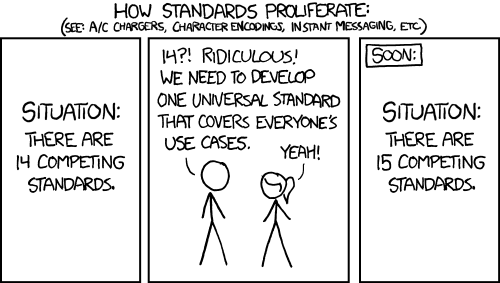Our recent Linkedin poll asked our community what area you think regulators and vendors should focus on to achieve universal interoperability faster. Most agreed that incentivising and enforcing universal health IT standards is the best way to reliably and securely provide a common language and information exchange framework, with the aim of building longitudinal patient records across care settings. Here, we take stock of the journey so far.
Firstly, this is not a new problem. Technology and information exchange standards often proliferate thanks to the endeavours of smart individuals working independently to solve a collective problem. While the consequences in any industry can occasionally be very dramatic, What’s unique about healthcare specifically is the growing scale and variety of standards adding to the problem.

With that in mind, cultivating a culture of data sharing and collaboration is key. Successful healthcare organizations are those that prioritize open APIs (Application Programming Interfaces) and data-sharing agreements. By breaking down data silos and promoting information sharing, more healthcare providers are ensuring better outcomes by creating connected, efficient, and patient-centred healthcare ecosystems.
Any successful roadmap to enforcing universal health IT standards must include education and awareness. Regulators and vendors are increasingly providing training, resources and case studies, along with suggested methods for effectively navigating a transition to standardized health IT systems. Two excellent examples of this are HL7 Australia’s Sparked, an FHIR Accelerator Programme that aims to deliver a core set of FHIR standards for use in Australian healthcare settings. In the US, the Argonaut Project is a private sector initiative to advance industry adoption of modern, open interoperability standards.
Incentivizing compliance. Policymakers are also increasingly leveraging regulatory frameworks, such as meaningful use requirements or reimbursement incentives, and testing and certification programs, to encourage providers to prioritize interoperability in their IT strategies. In addition, technology vendors are demonstrating compliance with recognized standards, therefore attracting customers who prioritize interoperability and data exchange capabilities.
Although it’s taken a long time for regulation to be put into place, it’s definitely achieved the desired result. Regulations like the 21st Century Cures Act and CMS Interoperability and Prior Authorization Final Rule were created to implement advances in interoperability and support the access, exchange and use of electronic health information across disparate systems. The establishment of the Trusted Exchange Framework and Common Agreement (TEFCA) and the creation of Qualified Health Information Networks (QHINs) are also helping to standardize data exchange protocols and promote interoperability at a national level.
However there also is a superfluity of products being developed by organizations without a specialised understanding of healthcare concepts and workflows. This contributes to a lack of standardization, inconsistent protocols for data formats and communication interfaces, and security measures. In many cases, even modern platforms created by the same vendor do not necessarily talk to each other, and require architects to manually standardize and contextualize their data at the point of integration. This is a time-consuming and expensive process that is wholly unnecessary, given technologies like Orion Health’s recently launched Orchestral Health Intelligence Platform, or Amadeus Digital Care Record.
But interoperability compliance for compliance’s sake is no use without a drive towards defined outcomes. It’s vital to cultivate a thorough understanding of what an interoperability function needs achieve, who is utilizing it and how, in order to design the most effective system.
In the case of healthcare, rather than profit, the primary purpose of interoperability should be to ensure that organizations and vendors can make their data available to whichever specialist may be required to achieve the best possible outcome for a patient.100% health-focused companies like Orion Health share that purpose. Our organization has always been about making information flow, starting with the early days of our message mapping libraries to enable developers, through to the early adoption of FHIR back in 2012. Many of our products, standards and approaches have evolved because we have always believed that data needs to flow without interruption to deliver a better healthcare experience for all.
We believe it’s more than reasonable for patients, providers and clinicians to expect disparate health IT systems to communicate with each other regardless of vendor or platform. If money data or travel data can flow seamlessly, health information should flow too.
Read more about interoperability in our latest white paper The Interoperability Hype – can we trust it?



